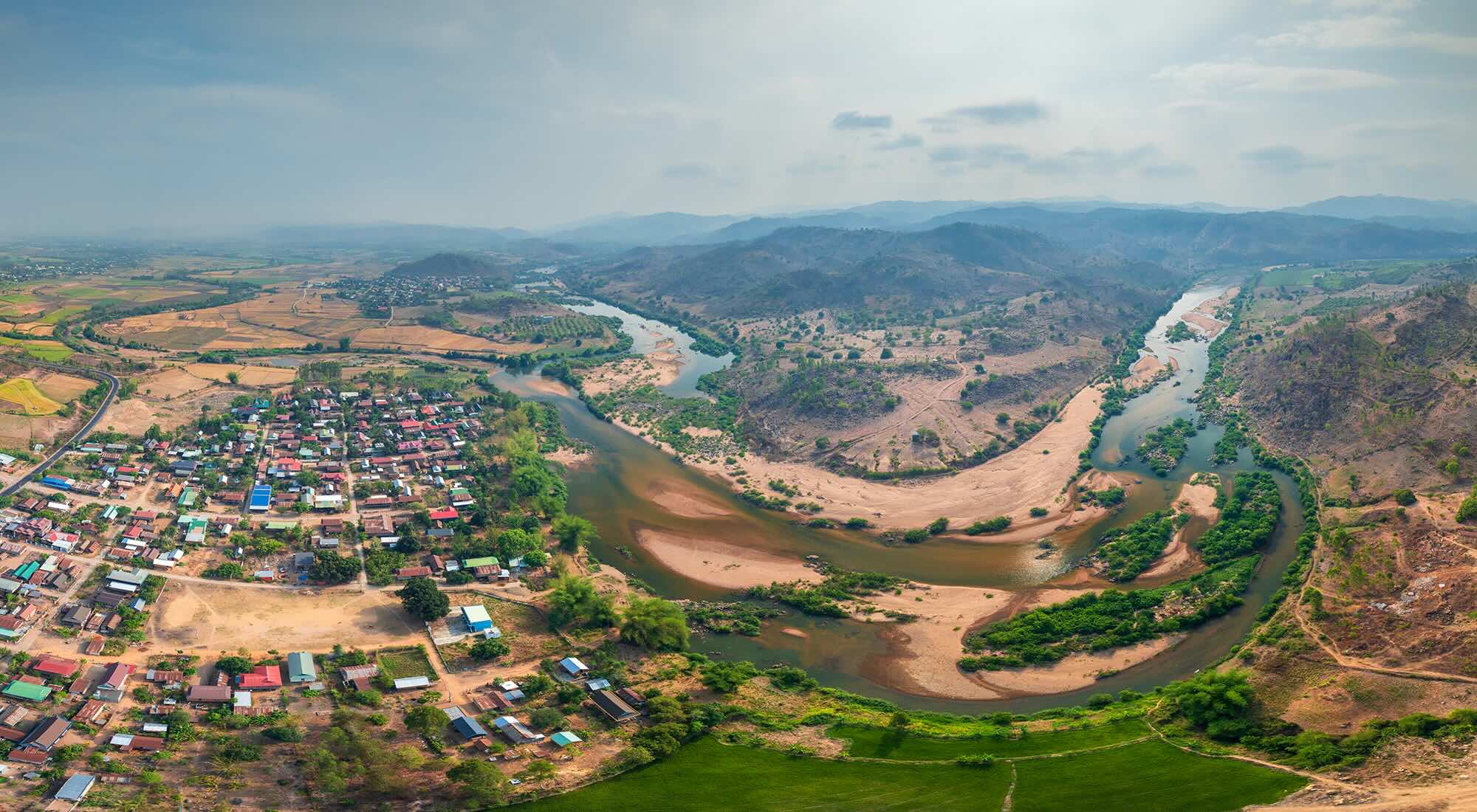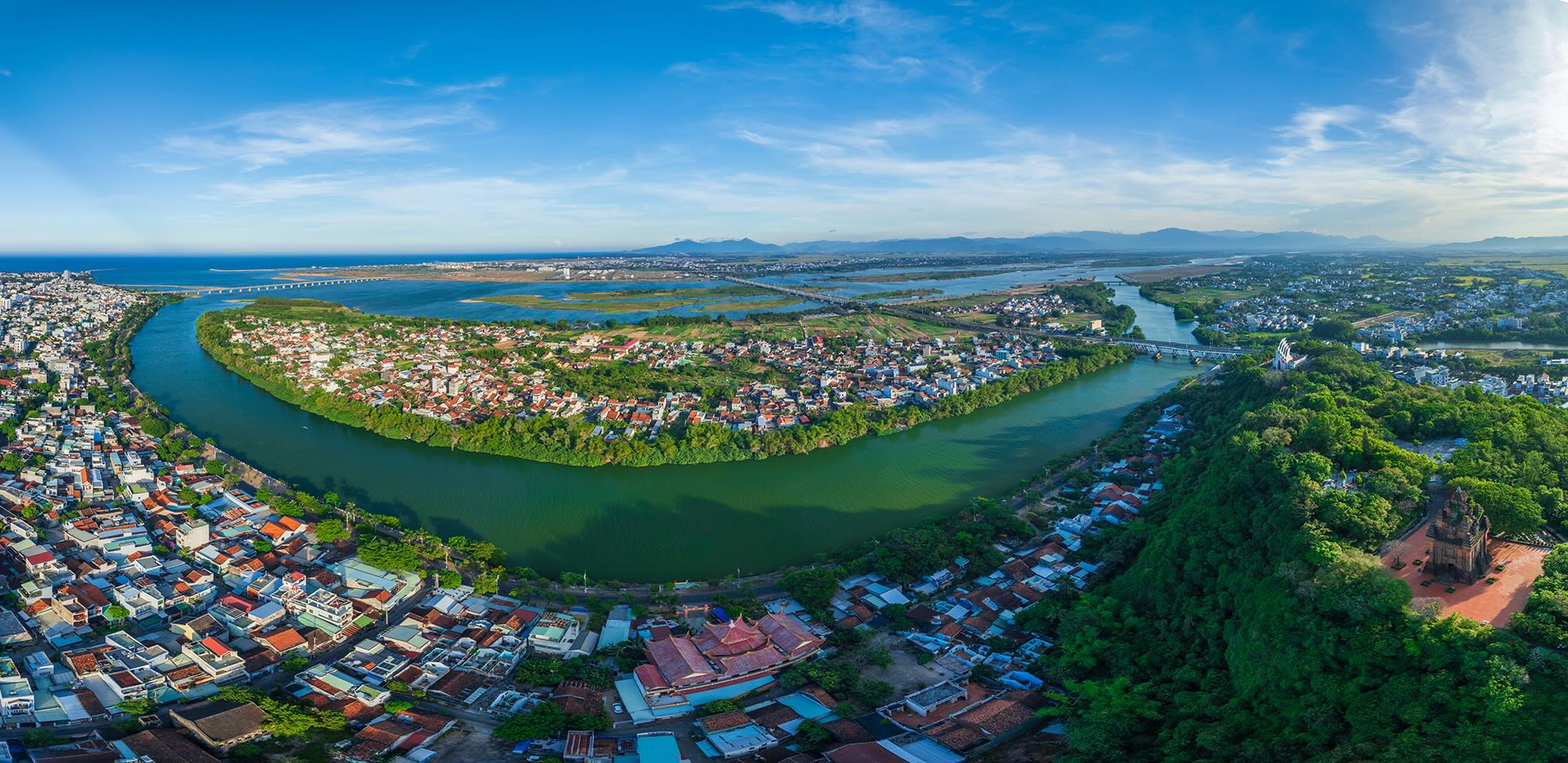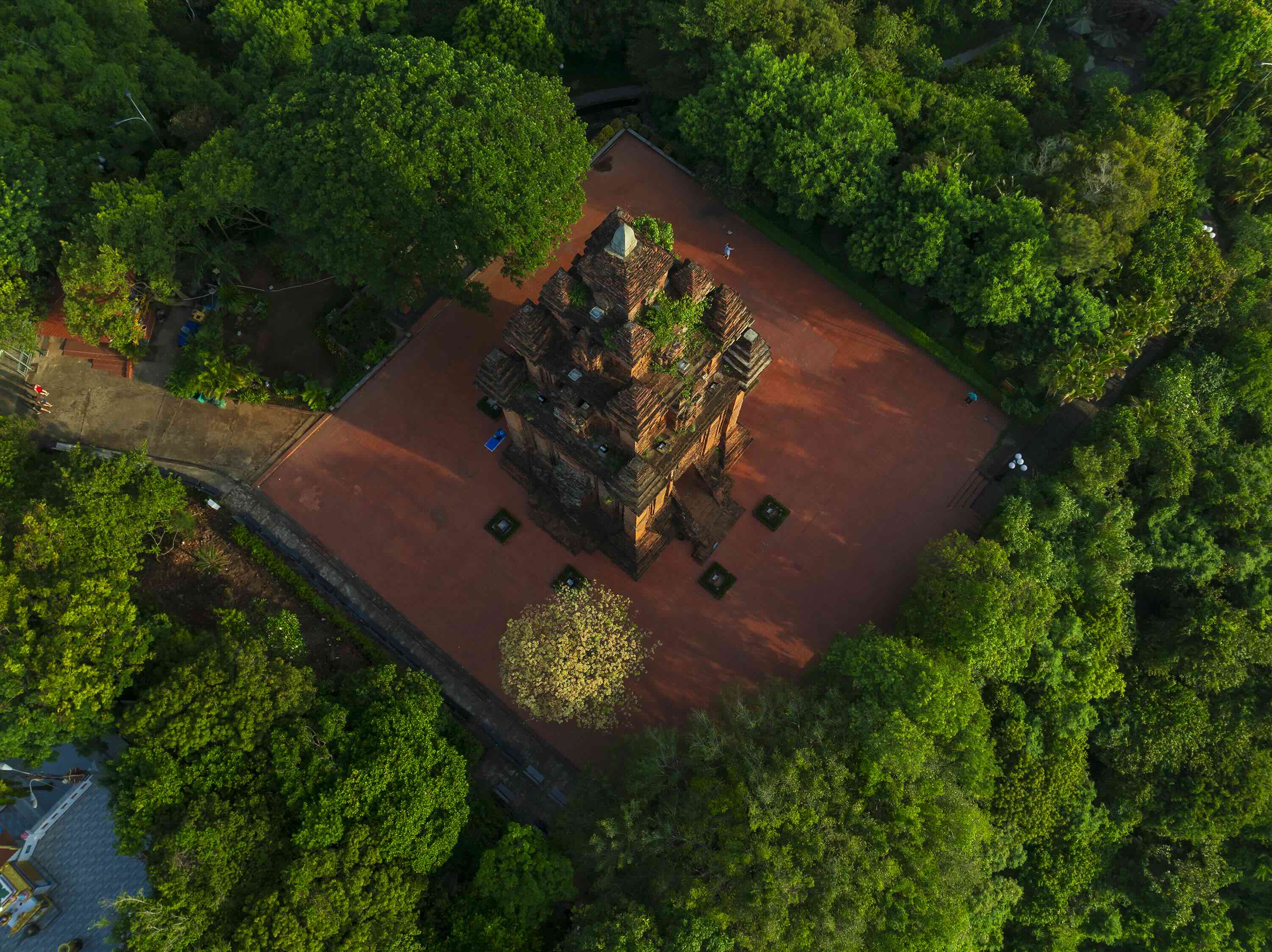Story: Nguyen Phuoc Bao Dan
Photos: Le Trung
According to historical and archaeological evidence, in the early centuries of the Common Era, the Ba River (also known as the Da Rang River) was one of the few rivers in Central Vietnam marked on Roman maritime maps, where it appeared under the name Dairios. It served as a vital stop along ancient maritime trade routes. Shrouded in wonder, this river functioned as a gateway, opening a path to unfamiliar lands waiting to be explored.

A river rich in traditions
Originating from the mountainous Ngoc Ro region of the Ngoc Linh range in Quang Ngai Province, the Da Rang River flows through Gia Lai and Dak Lak before emptying into the East Sea. It is formed by two tributaries, the Ia Pa and the Ayun, which local Jarai people call the Father River and the Mother River.
In its upper reaches, the Da Rang River connects to a “mythical land”, as described by French scholars. This area is home to mysterious ethnic cultural traditions and legendary figures, including M’tao (the Chief), Potao Apui (the Fire King), and Potao Ea (the Water King), who possess great spiritual power and communicate with the divine. As the river travels past E De Mdhur communities and into the semi-mountainous zones of Son Hoa and Song Hinh (Dak Lak), it carries rich alluvium, nourishing the fertile Tuy Hoa Delta, before linking coastal villages and the western hinterlands.
Nguyen Dynasty annals contain meticulous records of Tan Da Dien, the Ba River Estuary, thanks to its strategic importance. Shaped by nature as a direct artery leading into the resource-rich forests of the Western Highlands, the estuary offered access to rhino horn, ivory, agarwood, and other precious aromatics. These resources once conferred wealth and power upon this land’s rulers.

A cultural mosaic along its banks
During the Champa period, many structures were scattered across the river’s lower basin in the Tuy Hoa Delta. Relics of Champa culture remain widely visible today. Treasures gradually unearthed during the ongoing Vietnamese settlement include the fourth-century Cho Dinh Stele at the foot of Nhan Mountain to Nhan Tower, the ruins of Phu Lam Tower, the Ho Dynasty Citadel, ancient ramparts, Cham well systems, sandstone heads, steles, and terracotta bas-reliefs.
Drawn by highly profitable maritime trade networks, Chinese merchants arrived early in the Ba River Basin and swiftly took control of the trade routes linking the sea and forests, a distinct feature of the “salt road” in South Central Vietnam. Elders still recall the old boat landings along the river’s lower reaches, back when trade was bustling. The Kinh boat, with its signature white sail, became a symbol of the heritage of this region. Some say “Kinh” referred to boats owned by Kinh people, Vietnam’s ethnic majority, as opposed to the dugout canoes used by highland peoples. Others believe “Kinh” comes from the word “go”, referring to travel and trade in the highlands.
A typical journey lasted months, with boat owners and their spouses filling the boat’s hold with coastal goods like fish sauce, salt, dried seafood, gongs, and jars, and returning with forest products and valuable highland crops to sell in the lowland markets. The popularity of this trade gave rise to folk verses, such as:
“Planting betel, mixed with pepper vines
Trading upriver, mother dares, child runs wild.”
As river travel grew, markets gradually appeared along both banks, forming rest stops and trading hubs for those on long, tiring voyages. Oxcarts, horse-drawn wagons, and human porters were all employed to move goods inland. In this region of “yellow blossoms on green meadows”, a village began to specialize in raising and taming horses, remembered in the saying:
“Horses from Hoa Da / Kinh boats from Dong Tac.”
The image of a cart with wooden wheels rattling over rocky roads endures in the minds of visitors in this picturesque region today.

The hardships of making a living gave rise to various folk beliefs, forming both a foundation for daily life and a source of spiritual resilience. Shrines scattered along the river basin reflect layers of cultural adaptation. Every year, riverside communities hold traditional festivals to preserve personal legacies, clan heritage, and village unity.
If you ever visit this land of yellow blossoms on green meadows, take a journey upstream along the winding road that hugs the river and allow yourself to soak in the area’s endless wonders: the deep, ceaseless flow of the river, the vast sky, and the heartfelt warmth and hospitality of the local people. And if, by some miracle, time could turn backward, your experience might be even more magical, sitting in a horse-drawn carriage, rocked by the rhythmic clatter of wooden wheels over gravel.










